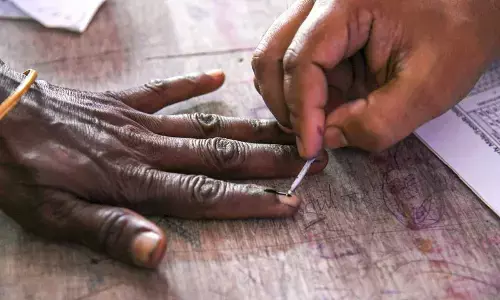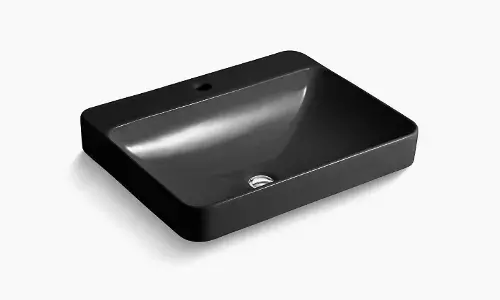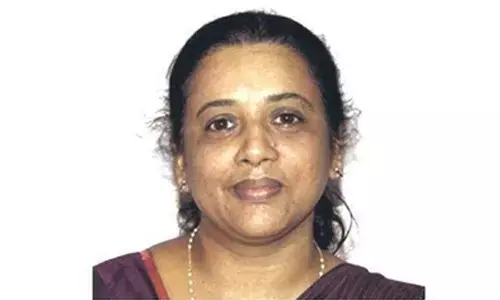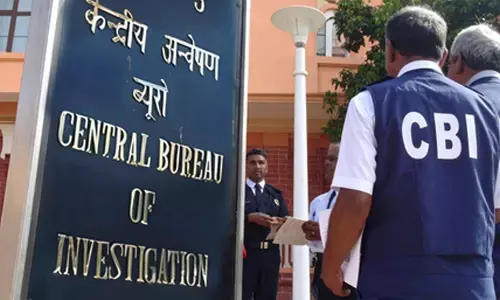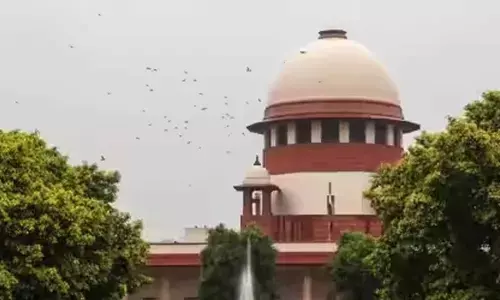Office of the President

This article seeks to explain the Articles that deal with the office of the President of India, meaning the qualifications required to contest for the office of the President, electorial college of the President, manner of election and so on
This article seeks to explain the Articles that deal with the office of the President of India, meaning the qualifications required to contest for the office of the President, electorial college of the President, manner of election and so on
.jpg)
The President is the executive head of the country. Articles 56 to 62 deal with the office of the President.
Article 52 provides for the office of the President. It states that there shall be a president of India.
Article 53 declares that
- The President is the executive head of the state (i.e., India).
- The Executive Power of the Union shall be vested in the President and shall be exercised directly or indirectly through offices subordinate to him in accordance with the Constitution.
- President is the supreme commander of the Armed Forces. This implies that only the President has the power to declare war or peace.
- The Parliament can confer additional powers on any authority except the president and the President cannot transfer any power vested on him under this Article to any authority.
Article 58 lists the qualifications for the office of the President. The Qualifications required as laid down in the constitution are -
- should be a citizen of India;
- should have completed the age of 35 years;
- should be qualified for election as a member of the house of people (Lok Sabha);
- must not hold any office of profit under the government of India or the government of any state or under any local or other authority subject to the control of any of the said governments. However, a sitting president, vice-president or governor of any state is not disqualified from contesting the election of president on grounds of office of profit.
Apart from the above qualifications the Presidential Election Act – 1974 laid down the following conditions for contesting the office of President.
A candidate must be proposed atleast by 10 members of the Electorial college and supported by another to members. This number was increased to 50 to 1997.
Candidate must pay the security deposit of Rs 2,500 along with the nomination papers. This is now increased to 15,000. The security deposit will not be returned if the candidate does not get 1/6th of the valid votes polled.
The above conditions are laid down to filter non-serious candidates from contesting for the office of the President.
Article 54 specifies the electorial college of the President, meaning it spells out who are the people who can vote in the elections for the office of the President. The electorial college of President consists of:
1.Elected members of both houses of parliament;
2.Elected members of the State legislative Assemblies.
Exceptions - All nominated members of the Parliament and State legislative assemblies and MLC’s of the states cannot vote in the elections to the office of the President.
Further, this Article was amended by the 70th Constitutional Amendment Act 1992 to include the elected members of the Assemblies of the National Capital Territory of Delhi and Union Capital Territory of Pondicherry.
Article 55 specifies the manner of election of President which is sourced from the Constitution of Ireland. The President is indirectly elected through the system of Proportional Representation by means of single transferable vote (STV). Proportional representation means that equal representation to the Union (Parliament) and the states is electing the President of India. The whole method of election of the President is evolved that it gives equal importance to the decision of the Parliament and the States. Unlike the general elections, the votes polled in the Presidential elections will not have a value of one but will have a vote value calculated on the basis of the following principles in order to ensure proportional representation to the union and states.
(i) Principles of Equality: ensures that the procedure of calculating the vote value of MLA’s is the same for all states.
Principles of Equality =
Total population of state x 1
Total no of elected members of the State Legislative Assembly 1000
The vote value of an MLA of state will depend on the population of that state and therefore the vote value of MLA’s varies from state to state.
(ii) Principle of Parity: ensures that the vote value of MPs irrespective of the constituency of the state they represent is the same.
Principle of Parity = Total vote value of all MLAs of all the states
Total no of elected MPs
Quota system - After the elections, the total number of votes polled are divided by the number of candidates contesting in the elections is calculated and one is added to the quotient in order to calculate the quota required to be declared as the winner. Only that candidate who gets the quota is declared elected as the president.
Quota = Total vote values of elected MPs + Total vote value of all elected MLAs of all states + 1
No of candidates contesting
Single transferrable vote - Unlike the general elections, voters for the office of president do not chose one candidate but indicate their preferences for the candidates contesting for the office of the president. For example, if three candidates are contesting for the office of the president, then the voters are supposed to indicate their first, second and third preferences for the office of the president. First preference votes are counted first. If any candidate secures the quota in this count, he is declared elected. If no candidate is able to secure the quota, the candidate who has secured the lowest number of votes is eliminated and the second preference votes are counted and added to the number of votes obtained by the remaining candidates. This process continues till a candidate obtains the required quota











